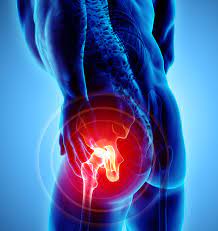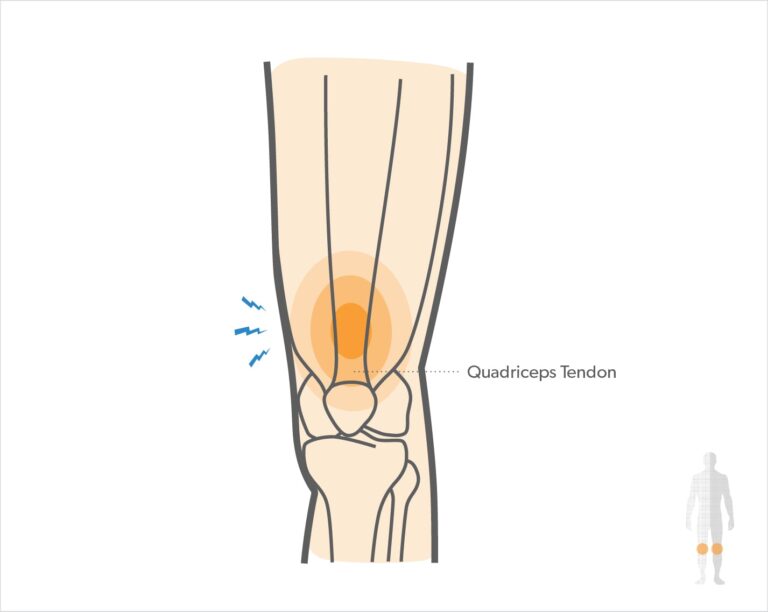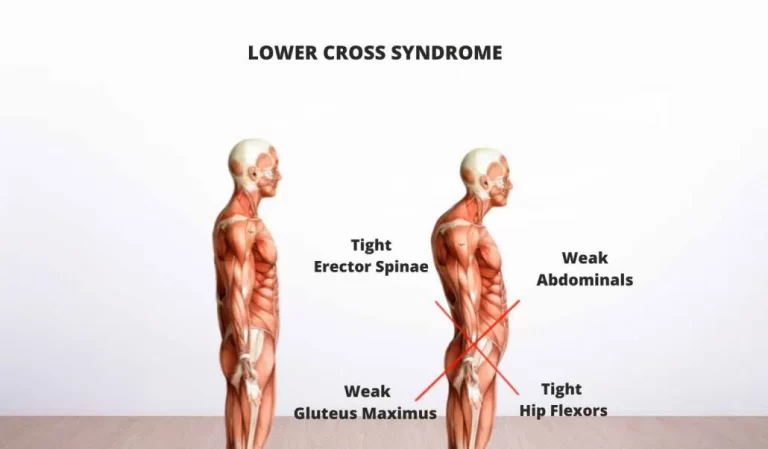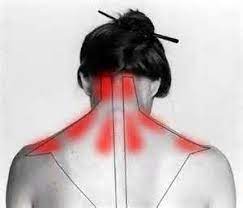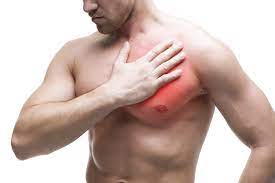Muscles Pain in the Lower Abdominal
Table of Contents
Introduction
Some individuals refer to abdominal pain as aches or cramps in the belly. the patient could feel this pain anywhere between the pelvis and the ribs area. Lower abdominal pain might occur between the pelvis and the belly button.
Most commonly individuals find that their abdominal pain goes away on its own and does not last for a longer period of time. Commonly, the causes of abdominal pain are not so serious. Common causes include trapped wind, periodic pain, and urinary tract infections (UTIs).
lower muscle abdominal pain has many potential causes. The more common causes — such as gas pains, indigestion, or a pulled muscle — usually are not so serious. Other conditions may require urgent medical attention. While the location and pattern of lower abdominal pain could provide vital clues, its time course is beneficial when determining its cause.
Acute lower abdominal pain develops and often resolves over some hours to some days. Chronic lower abdominal pain may be episodic(intermediate), meaning it may come and go. This pain may be present for weeks to months, or even years. Some chronic conditions cause progressive pain, which steadily gets worse over a long period of time.
What are the conditions in which lower abdominal muscle pain happens?
The many conditions that cause acute lower abdominal pain are usually accompanied by other symptoms that develop over hours to days and days to a year. Causes of lower abdominal pain could range from minor conditions that resolve without any treatment to serious medical emergencies, including:
- Abdominal aortic aneurysm
- Appendicitis
- Cholangitis (bile duct inflammation)
- Cholecystitis
- Cystitis (bladder inflammation)
- Diabetic ketoacidosis
- Diverticulitis
- Duodenitis (inflammation around the first part of the small intestine)
- Ectopic pregnancy (in which the fertilized egg implants and grows outside of the uterus, known as in a fallopian tube)
- Fecal impaction (hardened stool that can not be eliminated)
- Heart attack
- Injury
- Intestinal obstruction
- Intussusception (in children)
- Kidney infection (pyelonephritis)
- Kidney stones
- A liver abscess (a pus-filled pocket in the liver area)
- Mesenteric ischemia (declined blood flow into the intestines)
- Mesenteric lymphadenitis ( lymph nodes in the folds of the membrane that hold the abdominal organs in place)
- Mesenteric thrombosis (blood clot in a vein carrying blood away from your intestines area)
- Pancreatitis
- Pericarditis (inflammation of the tissue around the heart organ)
- Peritonitis (infection of the abdominal lining)
- Pleurisy (inflammation of the membrane surrounding the lungs area)
- Pneumonia
- Pulmonary infarction (loss of blood flow to the lungs area)
- Ruptured spleen
- Salpingitis (inflammation of the fallopian tubes)
- Sclerosing mesenteritis
- Shingles
- Spleen infection
- A splenic abscess (a pus-filled pocket in the spleen organ)
- Torn colon
- Urinary tract infection (UTI)
- Viral gastroenteritis (stomach flu)
- Chronic (intermittent, or episodic)
Common causes:
The most common cause of chronic abdominal pain is often difficult to determine. Symptoms may range from mild to severe, coming and going but not necessarily worsening over the period of time. Conditions that might cause chronic abdominal pain include:
- Angina (reduced blood flow to the heart)
- Celiac disease
- Endometriosis
- Functional dyspepsia
- Gallstones
- Gastritis (inflammation of the stomach lining)
- Gastroesophageal reflux disease (GERD)
- Hiatal hernia
- Inguinal hernia
- Irritable bowel syndrome
- Mittelschmerz (ovulation pain)
- Ovarian cysts
- Pelvic inflammatory disease (PID)
- Peptic ulcer
- Sickle cell anemia
- Strained or pulled abdominal muscle
- Ulcerative colitis (a type of inflammatory bowel disease)
Symptoms:
Abdominal pain that gradually worsens over a period of time, often accompanied by the development of other symptoms, is usually serious in the body. Causes of progressive abdominal pain include:
Cancer
Crohn’s disease
Enlarged spleen (splenomegaly)
Gallbladder cancer
Hepatitis
Kidney cancer
Lead poisoning
Liver cancer
Non-Hodgkin’s lymphoma
Pancreatic cancer
Stomach cancer
A tube-ovarian abscess (pus-filled pocket involving a fallopian tube and an ovary)
Uremia (buildup of waste products in the human blood)
you’ll experience this pain when, coughing, sneezing, or laughing.
Sprinting or doing vigorous exercise.
Getting up after a protracted period of sitting or inactivity position.
Other symptoms include,
Abdominal pain
Bruising.
Stiff muscles.
Swelling.
Abdominal Muscle spasms or cramping
Sudden sharp pain
The surface of the stomach part may feel tender & inflamed. You are more likely to feel these quiet sensations when you are contracting the abdominal muscles & moving the muscles.
Weakness
Difficulty in breathing
Trunk pain during exercising, coughing, laughing, or sneezing
Difficulty in doing activities and moving
Diagnosis
- X-rays to check for ribcage injuries, spinal fractures, or other broken bones.
- MRI to check muscles or another injury.
What are the four types of abdominal pain?
Since your abdomen it is home to organs, your healthcare provider might want to narrow down the kind of pain you’re having by narrowing down the region you’re feeling it in. The body often divides the abdomen into quadrants or four parts. They may ask if your pain is in which area:
Right upper quadrant.
Left upper quadrant.
Right lower quadrant.
Left lower quadrant.
What does abdominal pain location tell you?
Location is a crucial clue to your abdominal pain, though it is not the only factor. It might indicate which organs are involved. For example, pain in the upper right quadrant might indicate a problem with your liver or gallbladder.
However, your doctor would also want to know more about what your pain feels like, how often you feel it, and how severe it is. This will give them additional clues about what kind of condition you may have.
Nonsurgical treatment
Nonsurgical, Conservative treatment maximum muscle strains don’t demand surgery if the muscle is fully damaged doctors suggest surgery If there’s a partial gash also the athlete can replace it when they’re effortless and have normal strength and movement. this normally occurs following anywhere from some weeks to several months of significant treatment and therapy. When the muscles are fully damaged, the athlete might be advantaged from surgical repair. tone- the effort of a muscle strain in the body.
Some therapists suggest avoiding inimical pain medicines which will extend your threat of bleeding in the body — similar to over-the-counter (OTC) medicine (naproxen sodium (Aleve) aspirin and ibuprofen, Advil, Motrin IB, — through the first 48 hours after muscle strain. Acetaminophen (Tylenol) et al. can be supportive for pain relief during this period.
A physiotherapist could help you to improve the strength and stability of the injured joint or limb. Your physiotherapist might suggest that you simply stabilize with a brace. for a few muscle injuries, abdominal sprint surgery might be called.
Physiotherapy treatment
Initial stage
A physiotherapist could help you to improve the strength and stability of the injured joint or limb. Your physiotherapist might suggest that you simply stabilize with a brace. for a few muscle injuries, abdominal sprint surgery might be called.
the R.I.C.E approach
To prevent swelling and pain as first aid by following RICE’s principal approach:
- R- rest
- I- ice for reducing swelling
- C- compression tapping and splinting
- E- elevation
starting with the appliance of an ice pack for 20 minutes. The ice pack is often reapplied every 2 hours for the first 2 to 3 days post-injury.
Rest is another component of the R.I.C.E. principle but it’s a little more difficult with an abdominal strain. Injuries to the arms and legs could easily be protected & rested through the utilization of crutches, slings, or braces. However, splinting the trunk of the body is not such an easy task.
To protect & rest the abdominal muscle, the athlete might have to limit activities for a few days til the pain reduce.
Physiotherapy treatment for abdominal muscle strain
The aim of activity treatment is
Reduce abdominal muscle pain
Reduce muscle swelling
Increases thigh muscle strength.
Improve full mobility of the ligament and corresponding joint in the body
Restore the patient’s confidence
Restore the patient’s whole functional activity
Acute stage -one to two weeks after injury in lower muscles abdominal pain
Physiotherapy rehabilitation could be started after 48 hours of injury, For the first few days give an electric modality give to relieve swelling and pain in reducing.
Electrotherapy treatment
Ultrasound
Ultrasound has been used for tissue healing
Increases blood circulation and mobility.
To reduce swelling and pain
Cryotherapy
Inflammation and swelling could be reduced by applying cryotherapy in form of ice packs, and cold water baths to the affected part. Continuous application of cold packs many times a day for 15-30 minutes at a time is recommended.
TENS
Transcutaneous electrical nerve stimulation (TENS) might be able to assess and reduce pain and muscle spasms.
exercise for lower abdominal muscles pain
Heeltap
Lie down face up with the patient’s arms to your sides and hands against the base. Bend the patient’s knees, keeping your calves parallel to the base area. Slowly lower your flexed feet forward til your heels barely touch the base. Squeeze your abs to asses and raise your feet back up to the starting position. Continue to repeat for 30 seconds.
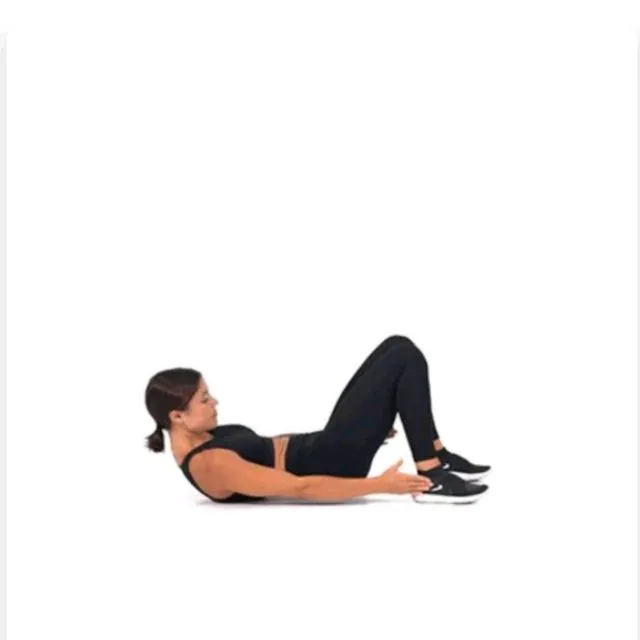
Mountain climber
initiate with a high plank position with your whole body straight and your hips joint level. Lift the patient’s right foot and draw your right knee toward your chest part in between your both hands. Keep the patient’s core tight and try not to hike the patient’s hip joint. As you return the patient’s right leg to plank, lift your left foot and draw your left knee to your chest between your both hands. Continue to alternate legs as quickly as possible for 20 to 30 seconds.
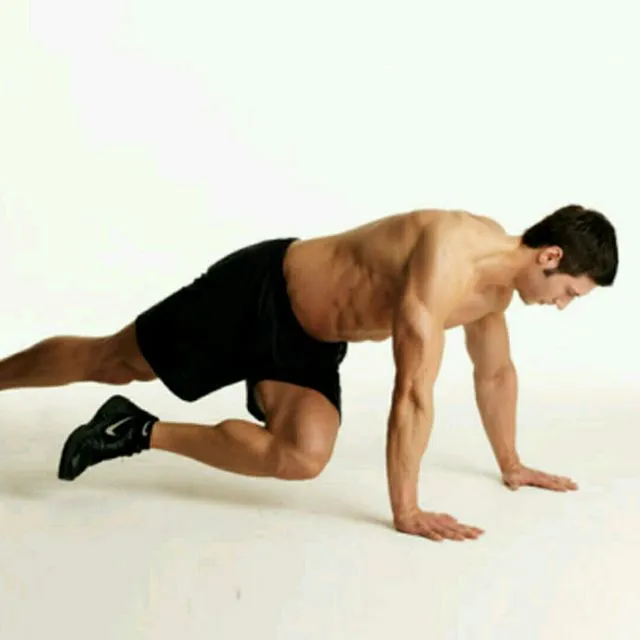
Scissor
Lie down the patient’s face up with the patient’s hands behind the patient’s head and the patient’s head and your shoulders lifted off the base area. Using your abs, lift your legs slightly off the floor and scissor kick with your right leg up and left leg down. Alternate your legs for 20 to 30 seconds. Do not strain your neck area or just your chin forward.
Slider pike
Grab some sliders, coasters, or towels to put under your both feet. Initiate in a high plank position with both feet on the slider part. Squeeze your low abs and pull your feet in toward your both hands, lifting your hip joint up toward the ceiling into a pike position. Slowly push the patient’s feet out to lower your back area into the starting position. Repeat for 30 seconds.
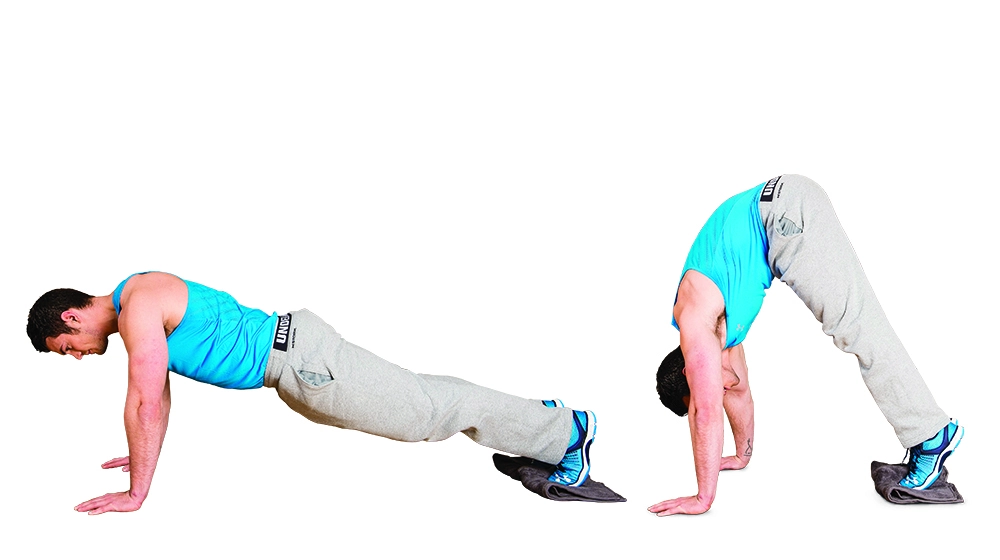
Straight leg raise
Lie down face up with the patient’s arms to your sides and hands against the base area. Brace your core and lift your straight legs slowly off the base, bringing them to 90 degrees angle. Slowly lower your legs back to the base. Repeat for 30 seconds.
Note: If the patient has pain in her lower back area, do not make this move, or try this pull-up bar variation instead.
Holding a pull-up bar, brace your core, and lift the patient’s legs off the base to hip height. (initially, you could bend their knees; advanced exercisers could keep their legs straight and hinge at the hip joint for more of a challenge). Slowly lower the patient’s legs to the starting position. Repeat for 30 seconds.
Cross-body climber
Start in the high plank position with your body straight, your hips level, and your core braced. Lift your right leg and draw your right knee toward your left elbow. As you return your right leg to the plank, lift your left leg and draw your left knee toward your right elbow. Continue to alternate legs exercise for 30 seconds.
Grab many sliders, coasters, or towels to put under your feet. Start in a high plank position with feet on the sliders. Brace your core and pull both feet in toward your chest area. Avoid hunching the patient’s shoulders or allowing your upper body to lean forward too much. Push the patient’s feet back to return to the starting position. Repeat as some times as you could in 20 to 30 seconds.
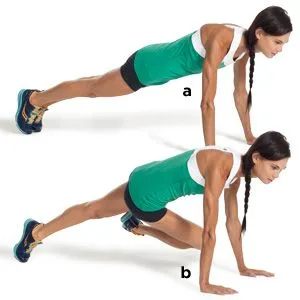
Exercise ball variation
If the patient has an exercise ball handy, try this variation instead:
beginning in a plank position with your feet on the ball.
Keeping the patient’s core engaged, draw both knees in toward your chest.
Slowly extend your legs back to the starting position.
Repeat for 30 seconds.
Rolling plank
Initiate in a low plank position propped up on your forearms. Hold for 10 seconds. Roll onto your right elbow, stacking the patient’s feet. Hold the side plank for 10 to 20 seconds, engaging your obliques. Roll back through the center and onto the patient’s left elbow, stacking your feet. Hold for 10 to 20 seconds. Continue to alternate, keeping your core engaged and not letting your hip joint drop, for 20 to 30 seconds.
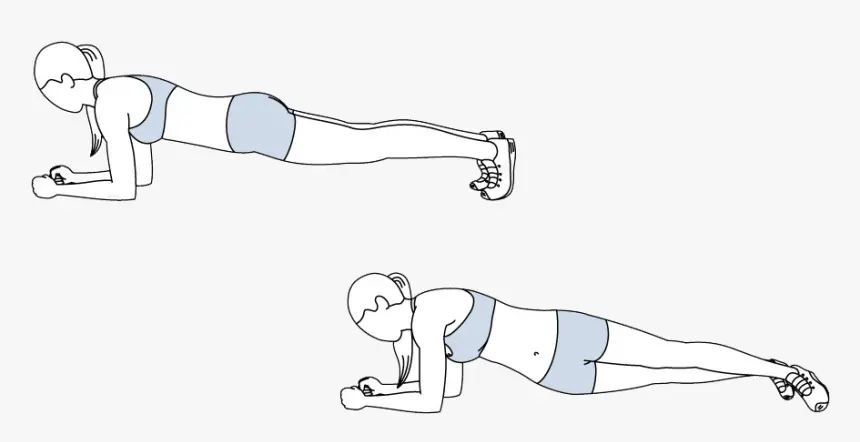
Roll up
Lie down face up with the patient’s legs extended, knees together, feet flexed, and arms straight overhead. Take a big inhale. As you exhale, lift the patient’s arms up and forward and use your abs to slowly roll up to a sitting position. Drawing your abs in, slowly lower your back to the starting position. Repeat as many times as you can in 30 seconds.
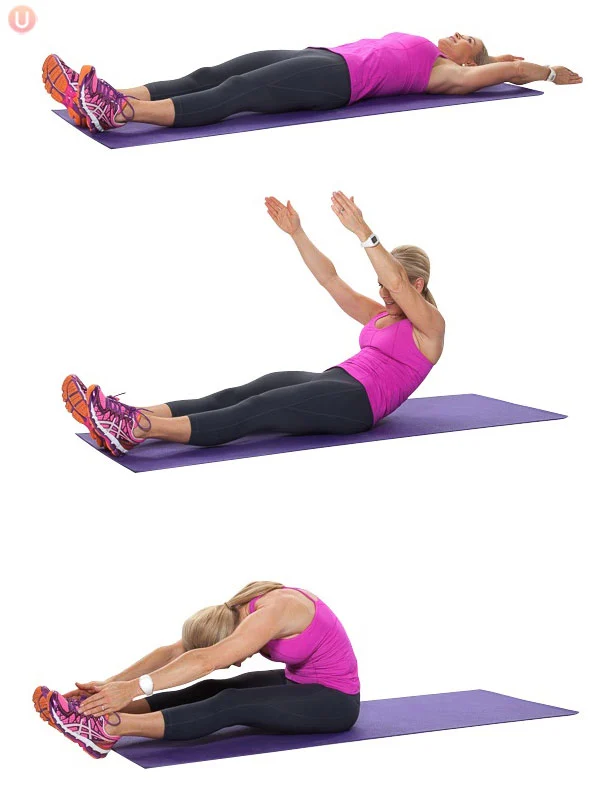
Jackknife
Lie down faceup with your legs extended, feet together, and arms raised straight overhead. Inhale. As you exhale, squeeze your abs and raise the patient’s right arm and left leg, touching your hand to your foot. Inhale and slowly lower back to the starting position lie down with face up. Repeat for 15 to 20 seconds. Repeat on the opposite side for 15 to 20 seconds.
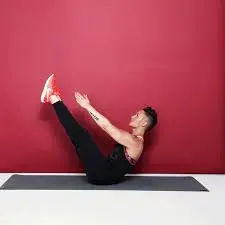
FAQ
Most probably, abdominal wall pain is related to cutaneous nerve root irritation or myofascial irritation. The pain could also result from structural conditions, known as localized endometriosis or rectus sheath hematoma, or from incisional or other abdominal wall hernias.
Your doctor might recommend stretching and strengthening exercises and other types of physical therapy to assess your healing. A mild strain might heal within a few weeks. A severe strain may take 6 weeks or longer.
An abdominal muscle strain, or pulled abdominal muscle, could cause pain that ranges from mild discomfort to muscle spasms and bruising.
Abdominal pain has many potential causes. The most common causes — such as gas pains, indigestion, or a pulled muscle — usually are not serious. Other conditions might require urgent medical attention.
Abdominal pain has many potential causes. The most common causes — such as gas pains, indigestion, or a pulled muscle — usually are not serious. Other conditions might require urgent medical attention.


